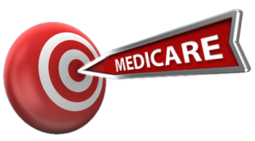Posted by Team KMCU on Mar 4, 2022
Electronic vs Paper Records
When we talk about documentation platforms, it is assumed that we are talking about Electronic Health Records (EHR). However, many practices use paper medical records to document their interactions with patients. And though this is a compliant way to document your patients’ care, filing and storing this information can be challenging.
As your practice grows, the number of paper files to manage and store can be overwhelming. Finding space in a secure location in your office might cause one to consider remodeling or storing records off-site which brings with it considerations of HIPAA regulations regarding the security of patient health information. There is another way!
Minimize Your Paperwork Storage
We know that most EHR systems include the capability to scan in and add the paper components of your practice to the patient’s existing account in the system. Informed consent forms and Advanced Beneficiary Notices (ABNs), for example, are scanned into the patient record within the EHR system. Similarly, you can minimize your paperwork storage needs by scanning and storing them digitally. You will need to implement organizational protocols and procedures around how to utilize and maintain this storage system.
The simple administrative task of scanning and storing your patient records is best performed as a patient completes their active episode of care. Gather the paperwork for the entire episode from updated history to discharge. For a new patient, include all patient intake forms, office policy forms, financial policies and agreements, Outcome Assessment Tools (OATs), radiology reports, and any other important pieces of documentation gathered or created during that first visit and episode of care.
You can then scan and store the patient chart using a HIPAA-compliant online resource such as ShareFile, Dropbox, or Box. Any of these storage options allow you access to your files from any computer but are password-protected for your patients’ privacy. For ease of reference, consider sorting your charts using a hierarchy that allows files to be alphabetized by last name. Break them down into manageable bundles, just as you would in a filing cabinet: A-G, H-P, Q-Z, or similar. If you have a patient with the last name of Adams, you could simply look in your electronic A-G folder. Under the file for Adams, a set of documentation might be named “2021 Neck,” to reference an episode of care that began in June of 2021 to treat a neck complaint. You could also use a date range for each episode of care, then simply scan in the chart in date order.
Shred the Paper!
Once you have scanned in and saved all the information, you can shred the paper! The only paper charts remaining will be those of your current active episodes of care.
Easy and efficient! Start your new year off by upgrading your paperwork storage. Need more assistance? Give us a call at (855) 832-6562 OR schedule a Discovery Consultation today to address specific issues within your practice!
Dr. Colleen Auchenbach graduated with a Doctor of Chiropractic from Cleveland University Kansas City in December of 1998 and practiced for over 20 years. Her interest in Medical Compliance began when she earned the 100-hour Insurance Consultant/Peer Review certification from Logan University in 2015. She has been a certified Medical Compliance Specialist-Physician since 2016. In November 2020, Dr. Auchenbach joined the excellent team at KMC University as a Specialist and as part of this dedicated team is determined to bring you accurate, current, reliable information. You may reach her by email at info@kmcuniversity or by calling (855) 832-6562.








Comments on Beginning of the Year Paper Clean-Up